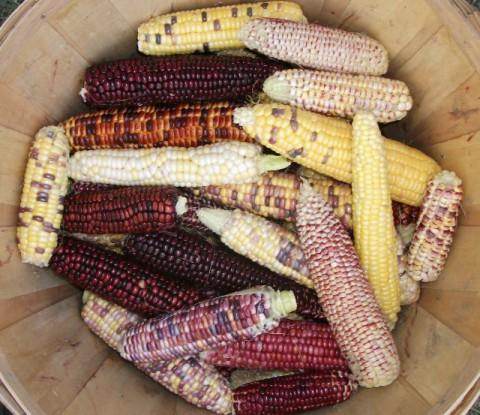
 1
1




Outdoor and Ecological articles (sporadic Mondays) at http://blog.dxlogan.com/ and my main site is found at http://www.dxlogan.com/
 1
1








Daniel Kern wrote:I don't have that but I do want to do that. Although I have some nutgrass that I am growing. I am going to take the largest nuts, and grow them, and eat the rest. then from those I will choose the largest plants, and maybe one day I will have a nutgrass worth cultivating as food.
The heirloom seeds at bakers creek heirloom is a collection of these types of breeds. they have an amazing variety of plants. check them out at www.rareseeds.com/store/vegetables/
Outdoor and Ecological articles (sporadic Mondays) at http://blog.dxlogan.com/ and my main site is found at http://www.dxlogan.com/








Pecan Media: food forestry and forest garden ebooks
Now available: The Native Persimmon (centennial edition)
 1
1




Dan Boone wrote:I have some wild persimmons on my property that are substantially larger and more delicious than most of the other trees around here. I want to propagate them and make them available as a named cultivar.
I won't be able to name them after myself, though, because according to that 100-year-old USDA pamphlet on wild persimmons that I made into an e-book, there already is (or at least, there was 100 years ago) a cultivar named Daniel Boone.
Outdoor and Ecological articles (sporadic Mondays) at http://blog.dxlogan.com/ and my main site is found at http://www.dxlogan.com/
 5
5












 11
11




D. Logan wrote:Does anyone else here have one of a kind varieties? Things passed down from a previous generation or something you took the time to cultivate yourself? Maybe it isn't something you have yet, but are working on or planning to work on in the near future as well. I, for one, would love to hear about these varieties and what sets them apart and/or why they were developed.






 1
1




 3
3

















 1
1








 He had acquired some seeds directly from growers in the region.
He had acquired some seeds directly from growers in the region.

Just me and my kids, off griddin' it - follow along our shenanigans at our YouTube Uncle Dutch Farms.





Adrien Lapointe wrote:Amazing information Joseph, thanks for posting it!
Have you done much experiments with perennial plants and trees?




Joseph Lofthouse wrote:I am also working on pistachios, cherries, hazelnuts, pecans, strawberries, apples, pears, peaches, almonds, kiwi and others. They work on the same principles, just takes longer to harvest seeds.




Joseph Lofthouse wrote:
Adrien Lapointe wrote:
I am also working on pistachios, cherries, hazelnuts, pecans, strawberries, apples, pears, peaches, almonds, kiwi and others. They work on the same principles, just takes longer to harvest seeds.
Pistachios and almonds! Do you start them from seeds and whatever can survive winter is the winner for the first generation? Did you get seeds from a hardy variety?




![Filename: Beans.jpg
Description: Bean comparison [Thumbnail for Beans.jpg]](/t/36448/a/26504/Beans.jpg)






 1
1







 2
2




Joseph Lofthouse wrote:.....
I am also working on pistachios, cherries, hazelnuts, pecans, strawberries, apples, pears, peaches, almonds, kiwi and others. They work on the same principles, just takes longer to harvest seeds.
Iterations are fine, we don't have to be perfect
My 2nd Location:Florida HardinessZone:10 AHS:10 GDD:8500 Rainfall:2in/mth winter, 8in/mth summer, Soil:Sand pH8 Flat

 1
1




Joseph Lofthouse wrote:Yes, I'm working on trees. Some of them end up being multi-generational projects... For example, with Carpathian walnuts. The first generation was planted about 70 years ago by someone unknown by me. About 30 years ago my in-laws planted a seed from that tree that grew into my current tree. I'm currently growing many dozens of Carpathian walnut seedlings per year and selecting among the third generation for seedlings that thrive in this area. Eventually they may grow up enough that I can start selecting for taste.


 3
3





 7
7




![Filename: moschata-selection-counter_640.jpg
Description: Selecting squash by color [Thumbnail for moschata-selection-counter_640.jpg]](/t/36448/a/45185/moschata-selection-counter_640.jpg)
![Filename: moschata-selection-pan_640.jpg
Description: Tasting every squash. [Thumbnail for moschata-selection-pan_640.jpg]](/t/36448/a/45186/moschata-selection-pan_640.jpg)
 1
1





 1
1





 2
2





 2
2










 4
4








 1
1




Simone Gar wrote:So when do you fall sow fava beans? I am a zone colder but I am playing with cold hardy-ish flowers. Wondering about vegetable now. I need to relieve spring time so late summer/fall planting would be ideal.

















 2
2




Maureen Atsali
Wrong Way Farm - Kenya




Maureen Atsali
Wrong Way Farm - Kenya





Maureen Atsali wrote:Anyone seen maize/corn like this before?
![Filename: corn-red-stalk.jpg
Description: Corn with red stalks [Thumbnail for corn-red-stalk.jpg]](/t/36448/a/45464/corn-red-stalk.jpg)










|
Been there. Done that. Went back for more. But this time, I took this tiny ad with me:
Play Your Way to a Sustainable Lifestyle: Uncover Permaculture Principles with Each Card
https://gardener-gift.com/
|









